The winds of change
Traditionally, when setting up an office, it would be necessary for organisations to make an initial investment for computer hardware (computers, laptops, servers, storage and networking hardware). Software would also be bought outright (a perpetual licence) and downloaded onto the computers via a CD or download code. An annual reoccurring maintenance fee (a percentage of the original licence fee) would be an additional charge to cover the cost of upgrades and support.
Today, many organisations still own and house their own computer hardware and it is still possible to buy software, but increasingly, organisations are choosing to use elements of cloud computing. This means that instead of owning their hardware and software on premise, it is provided by a third party and available ‘as a service’ via the internet. Software as a Service (SaaS) is used by most organisations for everyday tasks such as creating and sharing files (Microsoft 365), signing and sending contracts (ADOBE Sign, DocuSign) and project management (Jira, Monday, Trello).
The tools and applications are highly scalable and easy to access remotely which is particularly helpful for distributed global teams who don’t work in close proximity. With SaaS, every aspect of the software’s hosting, setup, storage and maintenance is handled by the vendor. The monthly or annual subscription fee includes all the updates, support, some storage and the latest versions. It allows for a flexible and collaborative use of a resource without having to make the large outlay for ever changing technology.
Accounting software is a computer program available as an app that assists accountants in recording and reporting a firm’s financial transactions. Software such as QuickBooks Online, Synder, Xero and Sage enable accountants to access their customers invoices and receipts, sales records and bank statements in real time and from anywhere with an internet connection.
Unlike traditional accounting, which involves a lot of manual data entry, cloud-based accounting dramatically reduces the time accountants need to perform basic tasks. Besides shortening the accounting processes, cloud computing ensures improved accuracy and automates some of its functions for streamlined operations. Different firms have different accounting software needs, from the simple, off the shelf apps to the more complex, customized accounting software.
Accountants are not the only professionals becoming middle-men in subscription software packages. The 2021 SME Barometer study of SME trends and developments reported that as many as 37% of professional service firms choose to offer their services through a subscription model. The benefits include a more predictable revenue and enhanced customer loyalty and flexibility.
There is a software as a service product designed to manage most business needs and many businesses are juggling multiple software as a service subscriptions. Most subscriptions are payable per user and the ever-rising ongoing costs can really mount up. Software leasing costs are more expensive in the long term than buying and if payments stop, theoretically the service stops working and the storage or the tool or the desktop disappears.
Despite this, many organisations like to pay subscriptions instead of a capital investment as these ongoing expenses can be managed in the operating budget. When an organisation pays for something as an operating cost rather than a capital cost, the expense becomes a 100% tax deductible expense.
In addition to using Software as a Service, more and more businesses are now making the decision to move all their infrastructure from on premise to the cloud (Infrastructure as a Service or IaaS). Instead of housing and managing the IT infrastructure in house, servers and virtual machines (VMs), storage, networks, and operating systems are located on part of a server in a data centre, accessed remotely over the internet and rented on a pay-as-you-go basis. This system works particularly well for companies with multiple offices in different locations as the IT infrastructure can be managed from one location and renewed annually.
Products such as Microsoft Azure, Rackspace, Google Compute Engine, or Amazon EC2 are examples of IaaS. The user organisation uses terminals such as simple computers or thin clients to access virtual desktops that use the computing power and storage provided by the cloud service provider. It’s worth noting that despite the computing infrastructure being provided remotely by the cloud service provider, all of the security and backing up is the user organisation’s responsibility.
Stormy weather
Cloud computing can easily be scaled up or down depending on work flow, it is instantly accessible and it facilitates collaboration, yet despite these incredible benefits, there are some serious security concerns. If professionals and customers can access data over the internet from any location, so can criminals.
Most cloud providers (e.g. Amazon Web Services (AWS), Microsoft Azure, Google Cloud Platform) attempt to create a secure cloud for customers and aim to prevent breaches and maintain public trust, however, they cannot control how their customers use the service, what data they add to it, and who has access.
Most data breaches in the cloud are a result of badly configured accounts and interfaces with the most common cause being weak, default or stolen passwords. According to research by Microsoft, there are over 300 million fraudulent sign-in attempts to their cloud services every day and technological research and consulting firm, Gartner predict that “through 2025, 99% of cloud security failures will be the customer’s fault”.
It is crucial that all cloud services are set up correctly and have the essential security controls in place. It is estimated that 99.9% of attacks can be blocked simply by using Multi-Factor Authentication.
The location of the computers in ‘the cloud’ that hold your data is very important. This is the legal location of the data, and if that is ‘personal data’, you may be breaking the law if it is located outside the UK or the European Union. It is also important to research the company that is hosting the cloud service and looking after the computers which hold your data. Many data centres are kept up to date and secure, but it cannot be taken for granted as some are not secure, and may put your data at risk.
PART 2 of this blog discusses the essential cyber security measures that businesses can implement to help keep their data secure in the cloud.


